I confess that I was lured to this piece in the Nieman Lab because of the large image of the turtle you see here.
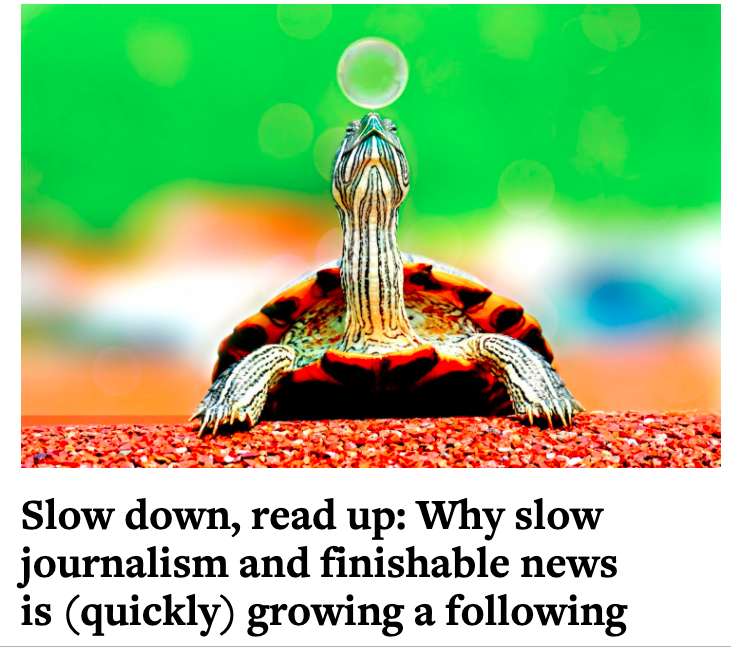
You see, I love turtles, and I have a collection of turtles from around the world: wooden ones, glass ones, ceramic versions, big ones, small ones. I have always thought that turtles are great since they only make progress when they stick their head out. In fact, my Skype handle is “grandparunningturtle”, since every time I have ran a marathon I have seen all the young runners pass me by on the way to the finish line and I felt well, like a turtle. But proud of it.
And turtles imply slow movement, so that is what the Nieman piece is all about: “slow journalism” start ups. Companies and execs banking on what they think is happening: the news cycle never ends, people have news fatigue and they simply are ready to throw in the towel. So slow journalism, long pieces, fewer of them, and more analysis to the rescue.
Their motto: “Slow down, wise up, go for knowledge over speed.” Hard sell, indeed, in the days of 24/7 news and the Trump Presidency and the Brexit Netflix drama. But, heck, we are all for long form journalism. I believe that lean forward and lean back is the preferred mode, but perhaps we want to lean back more. And we will be doing so with our mobile devices, I may add.
To quote the Nieman article:
“….these digital-first outlets place their bets on two converging trends: a growing need to elude what has been labeled “content overconsumption,” “information overload,” and “news is noise” in favor of more “finite,” “manageable,” and “digestible” news apps and content; and the factual or perceived shortcoming of the media that it is great at telling us what has just happened, but less good at explaining significant developments.”
Who is doing “slow journalism”?
1, Tortoise Media in the UK—
Tortoise Media subscribers receive no more than five articles per day in its “slow newsfeed,” as co-founder and publisher Katie Vanneck-Smith calls it. Launched on January 14 with 2,530 founding members, London-based Tortoise is currently in beta and plans to go live in April.
And how can one resist Tortoise Media’s logo?


Tortoise puts its slow journalism on the fastest of platforms, too. “
On Mobile
The news not as it happens, but when it’s ready. The slow news feed lands in the app, online or in your inbox.
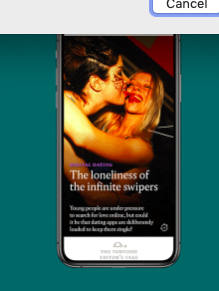
…and there is a print version where the long reads are compiled.
In Print
Tortoise Quarterly is a short book of long reads. Modern fables, true tales, old stories re-examined, new ones revealed.
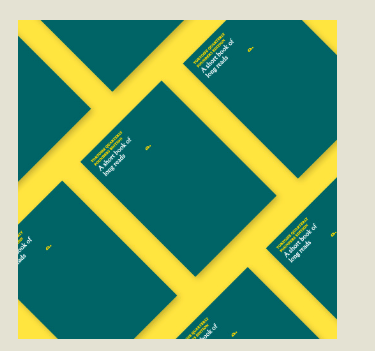
…and how about a Slow Newsletter?
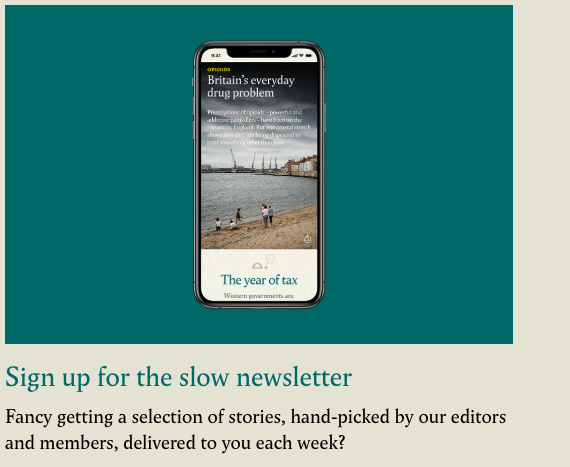
2. Zetland in Denkark—“The publishing “speed” of Copenhagen-based digital newspaper Zetland is even slower than Tortoise’s daily output. Just two stories on average land in members’ inboxes, at 5 AM Danish time each weekday. At Zetland, giving readers a realistic chance to complete all of its daily content is called the “finishable feature.” That way, members “don’t feel the urge to constantly check back to Zetland’s website for new content,” co-founder and editor-in-chief Lea Korsgaard said.”

And the promise of Zetland:
- Crafted articles in an award winning design created for immersion
- All journalism on sound – usually spoken by the writers themselves
- A daily news overview and a news podcast with a host who is nice to have in the ears
- A price of only 129 kroner a month. Free of noisy advertising
Noticeable: everything on audio, too
The rise of audio continues to impress me and Zetland echoes this: Each article is also published in audio format, with a short personal note from the author about what the story meant to them before they begin telling it. Zetland, which currently has 25 editorial staff, also publishes an audio version of that daily newsletter that aggregates other media organizations’ stories, too, driven by the members’ requests. Like Tortoise, Zetland also puts on live events, and both have a sleek, ad-free design without hyperlinks or notifications.
3. The Correspondent, Holland The Correspondent. This has been around and is perhaps the best-known slow journalism publication, raised $2,627,070 from almost 46,000 people late last year in a crowdfunding campaign to bring their “antidote to the daily news grind” to English-language readers (through not, it turns out, New York City) this fall with “at least one new story every day.”
This one is one that I have followed for a while, since my clients in Holland have kept an eye on it as something different, with a team of young millennial staffers who know what type of articles to pick for their long form journalism. They engage, for sure.
Their 10 key principles, or what The Correspondent team refers to as their antidote to “the daily news grind”:
We do not take ad dollars of any kind
We fight stereotypes, prejudice, and fearmongering
We don’t just cover the problem, but also what can be done about it
We collaborate with you, our knowledgeable members
We don’t take the view from nowhere.
We tell you where we’re coming from
We protect your privacy, by minimizing the personal data we collect
We want to be as inclusive as possible
We always put journalism before financial gain
We believe in transparency and continued self-improvement
My take on the slow of it all
I applaud these efforts to provide an exit down the slow lane on the road to greater understanding of stories of the day. I don’t think for a moment that slow form journalism will eliminate the constant lean forward motion into short bursts of news information. The fast lane will continue to be heavily trafficked, with rush hour delays and occasional smash ups. However, it is good to know that there are exits we can take, even if momentarily, to rescue ourselves from the non-stop news navigating cycle.
I know. This past weekend I had the honor of spending it with good friends in a remote part of Denmark, by the sea, and in the woods. It was refreshing. Envigorating. Inspiring (I got to write to vignettes for The Story there). Long walks. Pure air. The slow lane of life. But I figured that, as nice and peaceful as this was, I am a fast lane type of guy.
Surprisingly, when it comes to news I lean forward with gusto and lean back with passion. Many are like me, I am sure.
Pre-order The Story here
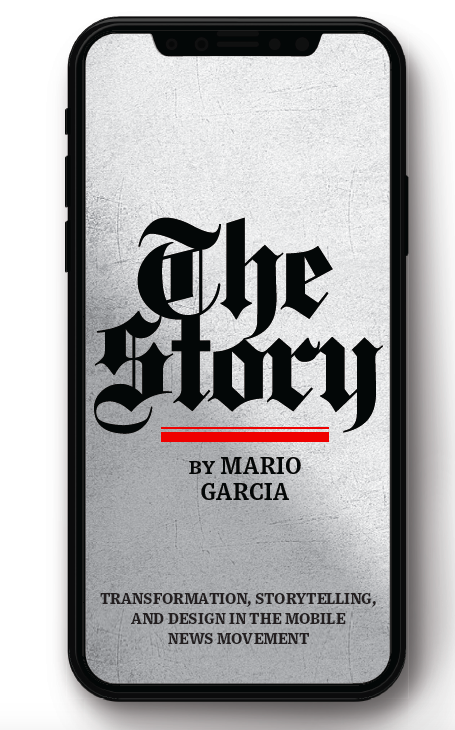
The newspaper remains the most powerful source of storytelling on the planet. But technology threatens its very existence. To survive, the Editor must transform, adapt, and manage the newsroom in a new way. Find out how, pre-orderThe Story by Mario Garcia, chief strategist for the redesign of over 700 newspapers around the world.
Order here:
https://thaneandprose.com/shop-the-bookstore?olsPage=products%2Fthe-story

An interview of interest
http://www.itertranslations.com/blog/2019/3/11/fd60ybflpvlqrgrpdp5ida5rq0c3sp
TheMarioBlog post #3020